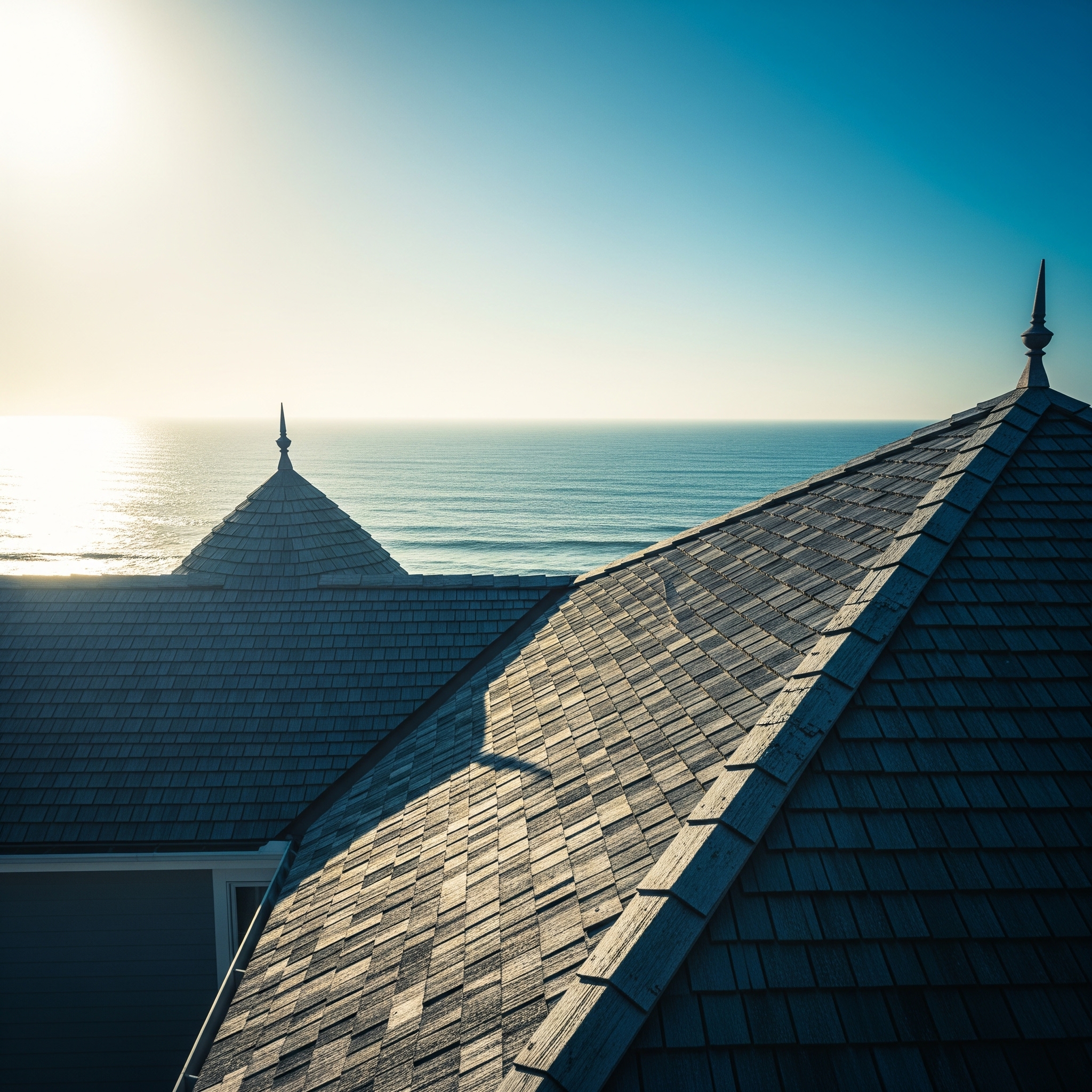Living in a coastal area like Long Island brings undeniable beauty — ocean breezes, salty air, and stunning views. However, these same elements that make coastal living desirable can also wreak havoc on your roof. Salt spray, high humidity, strong winds, and frequent storms all contribute to accelerated roof wear and tear.
At Baba Roofing, we know what it takes to keep your coastal roof strong, secure, and looking great year after year. In this guide, we’ll walk you through the best practices for maintaining your coastal roof and how regular care can save you thousands in future repairs or replacements.
Why Coastal Roofs Require Special Maintenance
Roofs in coastal areas face unique threats not found inland:
-
Salt Air: Corrosive salt particles can erode roofing materials and metal fixtures.
-
Humidity: Moisture buildup promotes algae, mold, and rot.
-
High Winds: Intense coastal storms can lift shingles and cause structural damage.
-
UV Exposure: Constant sun accelerates material breakdown.
Routine maintenance is essential to fight these elements and extend your roof’s lifespan.
1. Schedule Regular Roof Inspections
One of the best ways to maintain your coastal roof is through biannual inspections—preferably in spring and fall. During these inspections, a professional roofer will:
-
Check for cracked, curled, or missing shingles
-
Look for rust on flashing and vents
-
Inspect seals around chimneys, skylights, and vents
-
Identify signs of water damage or leaks in your attic
-
Examine gutters and downspouts for clogs or corrosion
📞 To schedule a roof inspection, call Baba Roofing at (631) 552-6884 or request one online at babaroofingandchimney.com/free-estimate
2. Clean Your Roof and Gutters Regularly
Salt, sand, and debris accumulate quickly on coastal roofs. This buildup can:
-
Trap moisture, leading to rot
-
Promote algae and moss growth
-
Block proper drainage
Roof Cleaning Tips:
-
Gently wash your roof with a garden hose twice a year
-
Avoid pressure washing — it can damage shingles
-
Remove moss or algae using a specialized cleaner
-
Trim back overhanging tree branches to reduce debris
Gutter Maintenance:
Gutters should be cleaned at least twice per year, or more frequently during storm season. Ensure downspouts are clear and direct water away from the home’s foundation.
3. Use Corrosion-Resistant Materials
If you’re building a new roof or replacing existing parts, insist on materials that resist coastal corrosion. These include:
-
Stainless steel flashing and nails
-
Aluminum or zinc-coated metal roofs
-
PVC or rubber roofing for flat sections
-
Copper for high-end aesthetic with weather resistance
At Baba Roofing, we always recommend and install products designed specifically for harsh Long Island coastal climates.
4. Keep Ventilation and Insulation in Top Shape
Salt air and humidity make your attic more susceptible to mold and mildew. A well-ventilated roof system reduces moisture buildup and extends the life of the roofing materials.
What to check:
-
Ensure soffit and ridge vents are unobstructed
-
Inspect attic insulation for moisture or mold
-
Install vapor barriers where appropriate
-
Consider attic fans for improved air circulation
5. Replace Damaged or Worn Roofing Components Immediately
Don’t wait for small issues to become major problems. If you notice:
-
Loose or lifted shingles
-
Rust on metal flashing
-
Stains or leaks in your attic
-
Sagging gutters or roof edges
Act fast. Coastal weather can turn minor issues into serious damage in one storm.
6. Storm-Proof Your Roof Ahead of Hurricane Season
Long Island is no stranger to strong storms and occasional hurricanes. Before storm season arrives:
-
Reinforce loose shingles or flashing
-
Secure gutters and downspouts
-
Trim nearby trees
-
Consider hurricane straps or clips for extra stability
-
Have an emergency roofing contractor on call
Baba Roofing offers emergency storm damage repairs and pre-storm inspections for homeowners across Suffolk and Nassau County.
7. Consider Protective Roof Coatings
For flat roofs and certain sloped systems, protective coatings can add an extra layer of defense against:
-
UV rays
-
Salt air
-
Water intrusion
These coatings can reflect heat, reduce cooling costs, and extend your roof’s life by up to 10 years. Ask our team whether your roof qualifies for a professional coating service.
8. Work with a Coastal Roofing Specialist
Not all roofing contractors understand the demands of coastal roofing. When it comes to your home, trust a team that’s local, licensed, and experienced with Long Island conditions.
Baba Roofing has helped homeowners protect their properties from Montauk to Massapequa. Our team is trained to:
-
Choose the best roofing material for coastal zones
-
Handle repairs after major storms
-
Recommend long-lasting, low-maintenance solutions
-
Provide transparent pricing and honest estimates
Free Roof Maintenance Estimates
Keeping up with coastal roof care may seem daunting, but we make it easy.
📞 Call Baba Roofing today at (631) 552-6884
📍 Or fill out our short form at babaroofingandchimney.com/free-estimate to request a free roof maintenance estimate anywhere in Long Island.
